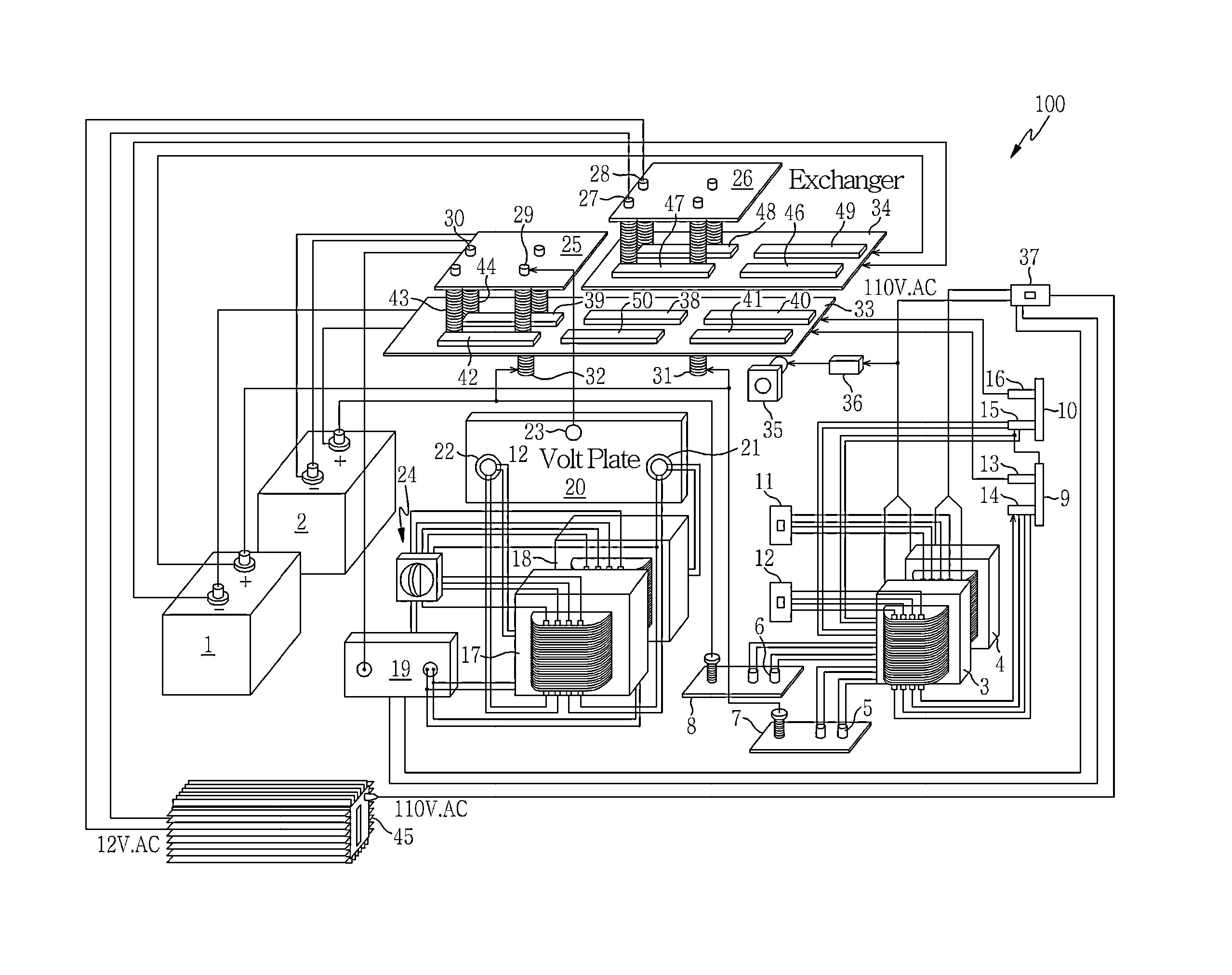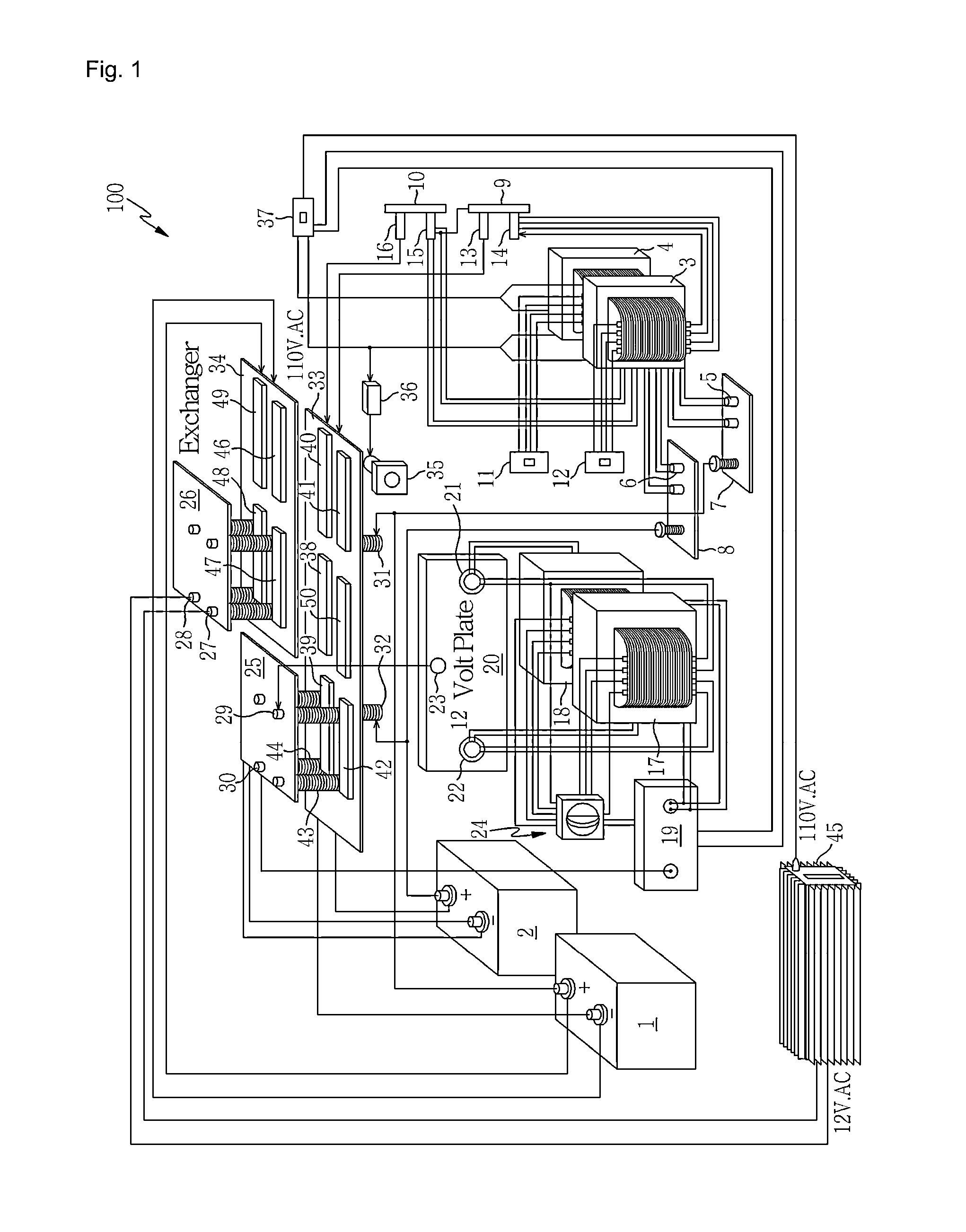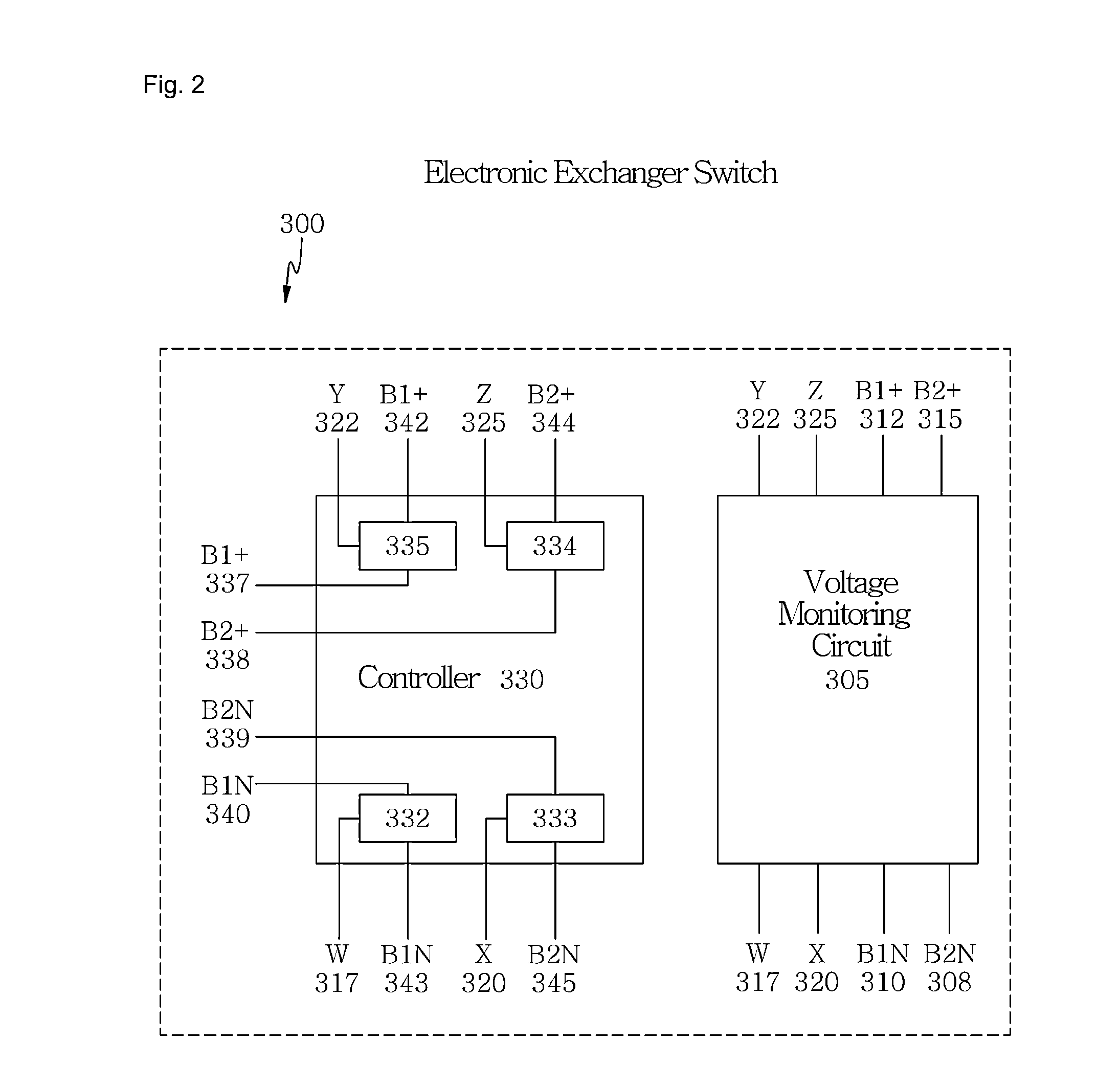Power Supply Device Using Secondary Battery and Method of Switching the Battery Mode
- Summary
- Abstract
- Description
- Claims
- Application Information
AI Technical Summary
Benefits of technology
Problems solved by technology
Method used
Image
Examples
Embodiment Construction
[0065]Hereinafter, the configuration and operation of the preferred embodiment of the present invention will be described in detail with reference to the accompanying drawings.
[0066]FIG. 4 is an overall configuration of the power supply apparatus according to the present invention. FIG. 5 is a perspective photograph showing the relay front view of the FIG. 1. FIG. 6 is a perspective photograph showing the relay rear view of the FIG. 1. FIG. 7 is a photograph showing the relay lateral view of the FIG. 1. FIG. 8 is a partial cross-sectional view of the relay of the FIG. 1. FIG. 9 is a controller circuit diagram of the FIG. 1. FIG. 10 is a flow chart showing the controller operation of the FIG. 9. FIG. 11a is a photograph showing discharging state of the battery 1 as a power source device and displaying the actual charging status of the battery 2 of the present invention. FIG. 11b is a photograph showing discharging state of the battery 2 as a power source device and displaying the act...
PUM
 Login to View More
Login to View More Abstract
Description
Claims
Application Information
 Login to View More
Login to View More - R&D
- Intellectual Property
- Life Sciences
- Materials
- Tech Scout
- Unparalleled Data Quality
- Higher Quality Content
- 60% Fewer Hallucinations
Browse by: Latest US Patents, China's latest patents, Technical Efficacy Thesaurus, Application Domain, Technology Topic, Popular Technical Reports.
© 2025 PatSnap. All rights reserved.Legal|Privacy policy|Modern Slavery Act Transparency Statement|Sitemap|About US| Contact US: help@patsnap.com



